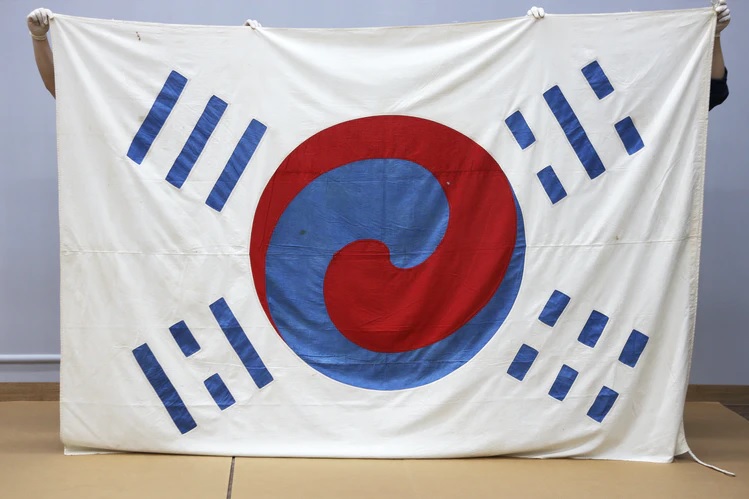
데니 태극기’는 대한민국에서 보존되고 있는 태극기 중 가장 오래된 태극기이다. 이 태극기는 등록문화재 382호로, 1886년부터 1890년까지 고종의 외교 고문을 지낸 미국인 데니(Owen N. Denny, 1838~1900)가 미국으로 돌아갈 때 가져갔던 것으로, 현재 한국에 남아있는 태극기 가운데 가장 오래된 것으로 추정된다. 크기는 세로 185cm, 가로 268cm로 현재 국립중앙박물관에 소장돼 있다.
이 태극기는 1882년 조선의 군주를 상징하는 어기인 ‘태극 팔괘도’를 기준으로 고종의 명을 받아 제작하였다. 태극기 제작 과정에는 역관 이응준과 수신사 박영효가 언급된다. 박영효의 증손자 박승우씨(2020년 7월24일 사망)는 증조할아버지가 일본에 파견되어 갈 때 직접 태극기를 그려서 사용하였다고 증언했다.
태극기의 중앙에는 백성을 뜻하는 흰색과, 관원을 뜻하는 푸른색과, 임금을 뜻하는 붉은색을 화합시킨 동그라미를 그려 넣어 고종이 계승하고자 했던 정조의 군민일체(君民一體) 사상을 표현했다.
음양을 둘러싼 8괘를 줄인 4괘는 건,·감·곤·리로 하늘·물·땅·불과 춘·동·하·추 계절을 의미한다.
1897년(광무 원년) 10월12일 고종 황제는 ‘대한제국(大韓帝國)’의 수립을 선포하고, 기존의 태극기를 그대로 대한제국의 국기로 사용하였다.
우리 민족의 국호인 ‘한(韓)’의 유래 가운데 고려 태조가 고려를 건국한 것을 “삼한을 통합 했다”고 했다는 이야기가 있다.
2009년에는 고대 한민족의 54개 부족국가 연맹체 삼한시대의 마한 모로비리국 왕릉으로 추정되는 고창 봉덕리 고분군을 발굴해서, 그동안의 수많은 도굴 피해에도 불구하고 보존 상태가 양호한 투조기법의 금동제신발 등 많은 유물을 찾기도 했다. 국호 ‘한(韓)’의 유래를 보여주는 유적이다.
미국에서는 1944년에 우정국에서 1905년 이전의 한국 국기를 담은 태극기 우표를 발행하기도 했다.
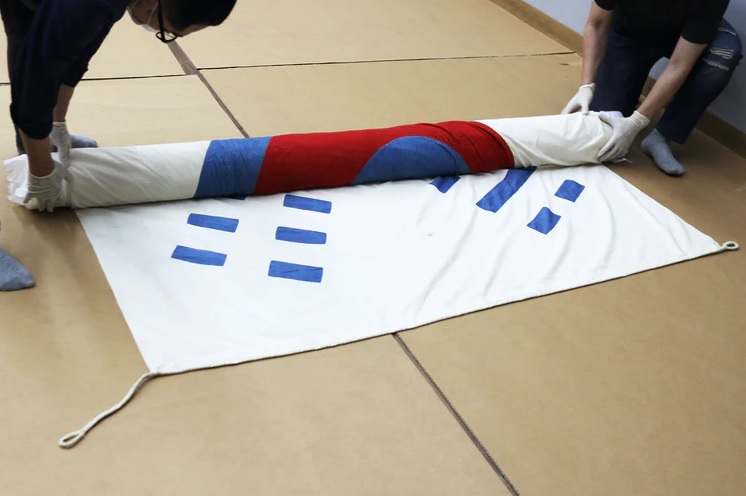
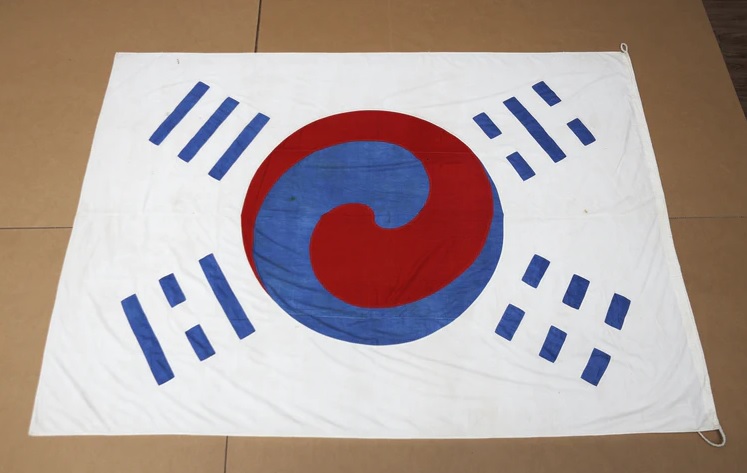
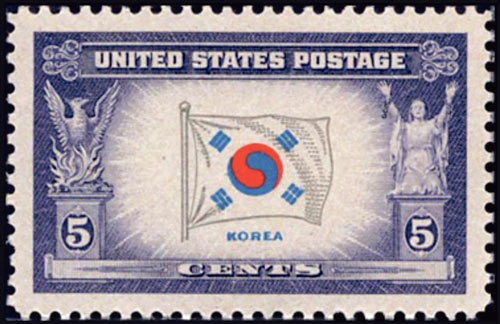
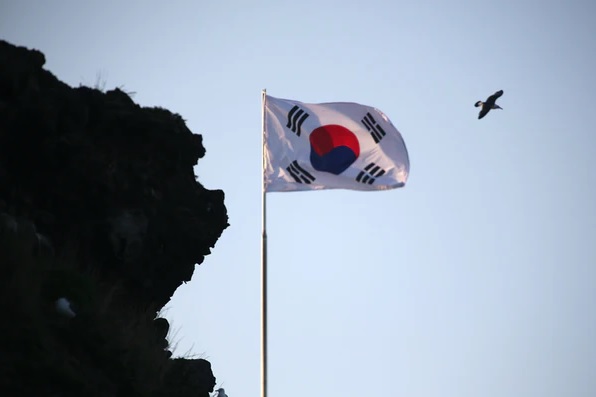
Ladies and Gentlemen, I present to you the oldest known flag of the Korean (한·韓) people.
“Denny’s Taegeukgi”
The oldest surviving Taegeukgi, registered as heritage No. 382 by the Cultural Heritage Administration, is named “Denny’s Taegeukgi,” which King Gojong reportedly presented to his U.S. diplomatic adviser Owen N. Denny (1838-1900) in 1890, and is kept at the National Museum of Korea.
The official designer of the Taegeukgi (태극기), the official flag of Korea, is Joseon's last King (26th) and later the founding Emperor of Korea, King Gojong (1852 ~ 1919). The 1882 design is based on the Taegeuk Palgwado (태극 팔괘도) of the Royal flag (어기) of Joseon Dynasty (1392 - 1897).
The colors of the Taegeukgi represent the People (white), the Government (blue), and the King (red), with four symbols surrounding the Eum/Yang in the center, Gun (건) representing the heavens, Gahm (감) representing the water, Gon (곤) representing the earth and Li (리) representing fire. They also represent the four seasons.
Other officials credited with the actual making of the Taegeukgi include Lee Eung-joon (이응준) and Park Young-hyo (박영효). According to Park Seung-u, a great-grandson of Park Young-hyo, Park Young-hyo designed the original Taegeukgi on his diplomatic mission to Japan in 1882. Mr. Park Seung-u passed away on July 24, 2020.
The origin of the 'Han' character used in the official name of our people, 'Han Guk, as in Daehan Minguk' (대한민국 大韓民國), includes Taejo Wang Geon, the founder of the Goryeo dynasty, who said, 'The founding of Goryeo was the unification of the ‘Three Han’ in reference to the collective name of Byeon-Han, Jin-Han, and Ma-Han confederacies, from the first century BCE during the Proto–Three Kingdoms of Korea, or Sam Han (삼한) period.”
Despite centuries of tomb raiding, especially during the Japanese colonial period in the 20th century, researchers discovered gilt-bronze shoes among other ancient artifacts at the Ancient tombs of the Royal family tombs of Morobiri kingdom of Ma-Han confederacy period in Bongdeok-ri, Gochang, Jeollabuk-do.
In 1944, the United States Postal Service published stamps bearing the pre-1905 flag image of Korea.
©2020 Hyungwon Kang
To see more Visual History of Korea:
Please visit https://www.kang.org/korea


















